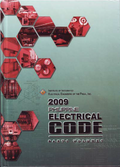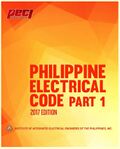Main Page: Difference between revisions
No edit summary |
(No difference)
|
Revision as of 16:40, 12 November 2021
Filipino Engineer Wiki
2.0 Tutorials
This part of the Filipino Engineer Wiki is an instructional guide designed to teach or demonstrate how to accomplish a specific Electrical Design task. The tutorials presented herein will simplify a complex processes or explain in a structured, step-by-step manner. Theseare usually aimed at beginners or those unfamiliar with a particular design process.
Filipino Engineer Wiki provides aggregated information on Electricity and its safe application to people everyday life.
Electricity is unarguably one of the most important basic technology that humanity needs in the world today. Every modern device, from personal gadgets, computers, cars to kitchen appliances, is dependent on electricity. Life, for most people, would be almost unimaginable without electricity.
Electricity in fact carved a wide path through modern life that imparting the knowledge of electricity to everyone has developed into several different specialties. Typically, one learns electricity for computers, electricity for electronics, electricity for power wiring, or some other subcategory. And while this is somewhat understandable, it has often eliminated a real and basic coverage of electricity.
We all use electricity every day and most of us just take it for granted that it is safe to use, however, luck runs out and bad things happens. The purpose of this wiki is to educate users about electricity on how to use it safely.
2.1 Calculations
2.2 Industrial Plant Design
2.3 Electrical Engineering
2.4 Do-it-yourself
Under Construction
2.5 Power Engineering
2.6 International Standards =
Under Construction
1.0 Philippine Electrical Code (PEC)
Note: To enable better understanding on the mark-ups used in this Design Guide, it is recommended that this part of the Philippine Electrical Code will be read first prior to going further into the Philippine Electrical Code Design Guide.
The Philippine Electrical Code (PEC) is a set of standards and regulations that govern the safe and proper installation, operation, and maintenance of electrical systems in the Philippines. It provides guidelines for electrical design, wiring, equipment selection, grounding, protection, and other related aspects to ensure electrical safety and efficiency.
The PEC is primarily based on the National Electrical Code (NEC) of the United States but incorporates modifications and adaptations to suit the local conditions, practices, and regulations in the Philippines. It is published and updated by the Institute of Integrated Electrical Engineers of the Philippines (IIEE) in collaboration with the Board of Electrical Engineering (BEE) and the Philippine Association of Certified Public Accountants (PACPA).
The PEC covers various aspects of electrical installations, including but not limited to:
General Requirements: This section outlines the scope and application of the code, definitions of terms, and general principles for electrical installations.
Wiring Methods and Materials: It provides guidelines for the selection and installation of wiring systems, cable types, conductors, raceways, and wiring techniques.
Grounding and Bonding: This section covers the proper grounding and bonding of electrical systems, including grounding electrodes, grounding conductors, equipment grounding, and bonding requirements.
Overcurrent Protection: It specifies the requirements for protective devices such as circuit breakers and fuses to prevent overcurrent conditions and ensure the safety of electrical installations.
Electrical Equipment and Devices: This section provides guidelines for the selection, installation, and use of electrical equipment, including switches, receptacles, lighting fixtures, and appliances.
Special Occupancies and Locations: It covers specific requirements for electrical installations in hazardous locations, swimming pools, medical facilities, marinas, agricultural buildings, and other special occupancies.
Electrical Services and Systems: This section deals with electrical service entrances, distribution systems, metering, grounding of service equipment, and requirements for electrical service providers.
The PEC is regularly updated to incorporate technological advancements, industry best practices, and changes in local regulations. It is essential for electrical engineers, electricians, contractors, and other professionals involved in electrical installations to adhere to the code to ensure electrical safety and compliance with the law. It is also a valuable reference for building owners, facility managers, and individuals seeking knowledge about electrical systems.
1.1. Conventions Used In This Design Guide
Contributors
Filipino Engineer Wiki wanted to express its gratitude to the following people who have provided their time, effort, support, reference materials, and comments to allow this endeavor to succeed despite the hurdles it has been facing throughout its existence.
- Ver Pangonilo - Filipino Engineer
- A Professional Electrical Engineer (Philippines) and a Registered Professional Engineer of Queensland, Australia (RPEQ) with 30+ years of experience in engineering, construction, maintenance, and manufacturing including 20+ years in Oil & Gas EPC/EPCM projects.
- Harry King Corral Avenido - Filipino Engineer
- A Registered Electrical Engineer (Philippines), Building Systems Engineer, Instructor, and Mentor with 6+ years of experience in engineering, construction, fire protection, solar photovoltaics, electrical-mechanical installation maintenance, and troubleshooting,



